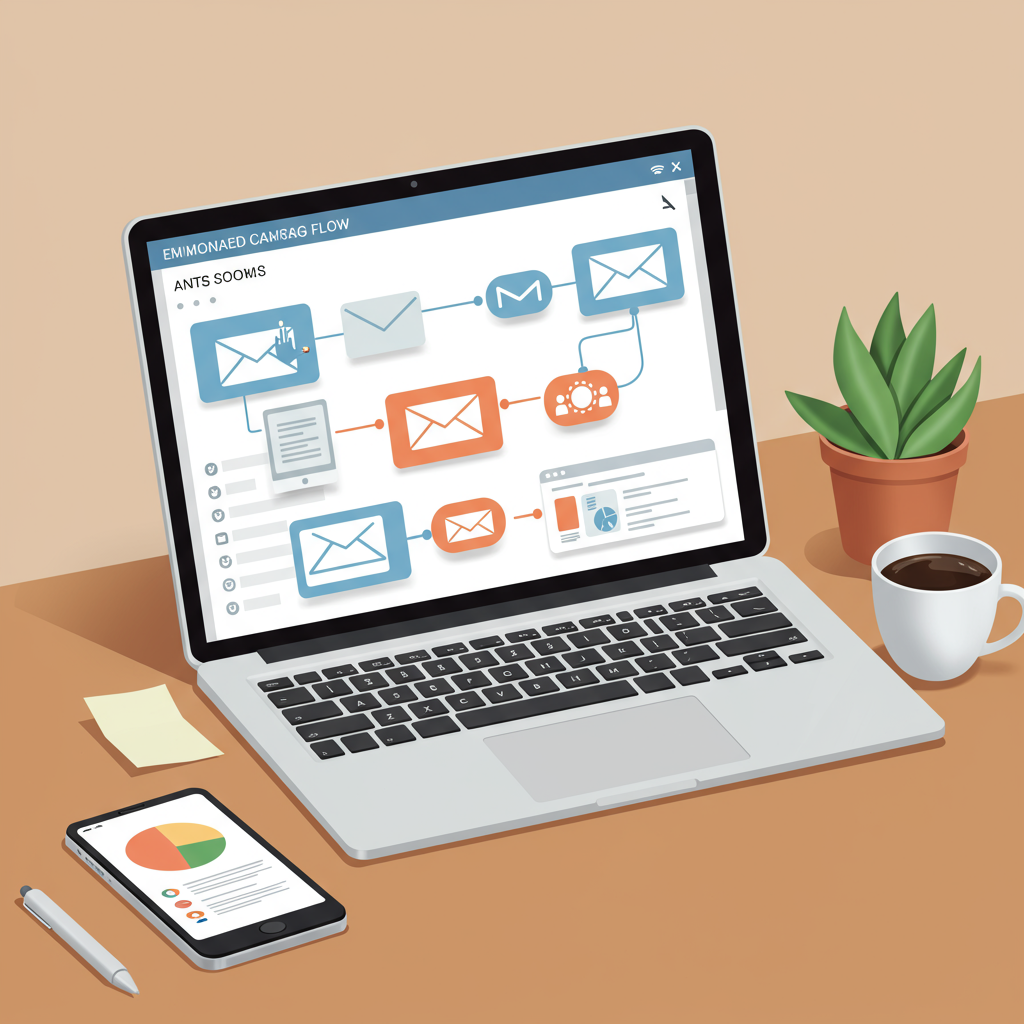Unlock Growth and Efficiency for Your E-commerce Store
Hello fellow Shopify merchants! Today, I want to dive deep into a topic that can truly transform your e-commerce business: automated email campaigns.
As someone who understands the daily grind of running an online store, I know how precious your time is.
That’s precisely why setting up automated email sequences isn’t just a good idea; it’s an absolute game-changer for efficiency and growth.
Think of email automation as your tireless, always-on marketing assistant, working 24/7 to engage your customers and drive sales, even while you sleep.
It allows you to communicate with your audience at precisely the right moments, without you having to manually send each message.
So, what exactly are automated email campaigns? They are pre-written emails or sequences of emails that are triggered by specific customer actions or events.
For instance, when a customer makes a purchase, abandons a cart, or signs up for your newsletter, an automated email can be sent instantly.
The beauty of this system lies in its ability to deliver timely, relevant messages that nurture leads, convert browsers into buyers, and turn one-time shoppers into loyal advocates.
Let’s explore some of the most powerful automated email campaigns you should consider implementing for your Shopify store.
First up, and arguably one of the most crucial, is the **Welcome Series**.
When a new subscriber joins your email list, or a first-time customer makes a purchase, a welcome email is your chance to make a fantastic first impression.
This series can introduce your brand story, highlight your best-selling products, offer a special discount, or simply thank them for joining your community.
I typically recommend a series of 2-3 emails over a few days, rather than just one, to build a stronger connection.
Next, we have the ever-important **Abandoned Cart Reminders**. This is low-hanging fruit for recovering lost sales.
Many customers add items to their cart but don’t complete the purchase for various reasons.
An automated email sent an hour or two later, reminding them of their items, can significantly boost your conversion rate.
You might even include a small incentive, like free shipping or a discount, in a follow-up email if the first reminder doesn’t work.
Then there are **Post-Purchase Follow-Ups**. These are vital for customer satisfaction and retention.
A simple “Thank You for Your Purchase” email is a must, often including order details and shipping information.
Beyond that, consider emails asking for product reviews a few days after delivery. User-generated content is incredibly powerful.
You can also use post-purchase sequences for cross-selling or upselling, recommending complementary products based on their recent purchase.
For example, if they bought a coffee maker, you could suggest gourmet coffee beans or mugs in a subsequent email.
Another highly effective automation is the **Win-Back Campaign**. These target customers who haven’t purchased from you in a while.
A gentle reminder, perhaps with a special offer, can re-engage dormant customers and bring them back to your store.
Don’t forget **Birthday or Anniversary Emails**. Collecting this data allows you to send personalized greetings with a special discount, making customers feel valued.
**Browse Abandonment emails** are similar to abandoned carts but trigger when a customer views products but doesn’t add them to their cart.
These can remind them of the products they showed interest in, potentially nudging them towards a purchase.
Finally, **Back-in-Stock Notifications** are fantastic for capturing demand for popular items that temporarily sell out.
Customers can sign up to be notified when an item is restocked, and an automated email does the rest.
Now, how do you set all this up on Shopify? While Shopify has some basic email capabilities, I highly recommend integrating with a dedicated email marketing platform.
Popular choices include Klaviyo, Mailchimp, Omnisend, and ActiveCampaign, all of which offer robust Shopify integrations and advanced automation features.
These platforms allow you to build complex flows, segment your audience, and track performance with detailed analytics.
When crafting your automated emails, always keep a few best practices in mind.
**Personalization** is key. Use the customer’s name and reference their specific actions or purchases.
Ensure your **subject lines** are compelling and encourage opens. They are your first impression.
Include a clear and concise **Call to Action (CTA)** in every email, guiding the customer on what to do next.
Make sure your emails are **mobile-friendly** as a significant portion of your audience will open them on their phones.
Maintain consistent **branding** across all your emails, from colors and fonts to your brand voice.
Don’t forget the importance of **segmentation**. The more you segment your audience, the more relevant your automated emails can be.
For instance, you might have different welcome series for customers who bought a specific product category versus those who just signed up for a newsletter.
Finally, remember that automation isn’t a “set it and forget it” solution.
Regularly **test and optimize** your email flows. A/B test subject lines, email content, and even the timing of your sends.
Analyze your open rates, click-through rates, and conversion rates to continuously improve your campaigns.
And of course, always ensure you are compliant with email marketing regulations like GDPR and CAN-SPAM.
Automated email campaigns are an incredibly powerful tool for any Shopify merchant looking to scale their business, improve customer relationships, and boost sales without constant manual effort.
They allow you to build a consistent, personalized communication strategy that works for you, around the clock.
I truly believe that investing time in setting these up will yield significant returns for your store.
What do you think about this article? I’d love to hear your thoughts and experiences with email automation!
Implementing these strategies will free up your time, allowing you to focus on other critical aspects of your business, like product development or marketing.
So, take the leap, explore the possibilities, and watch your Shopify store thrive with the power of automation.






